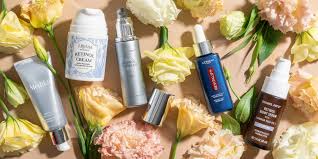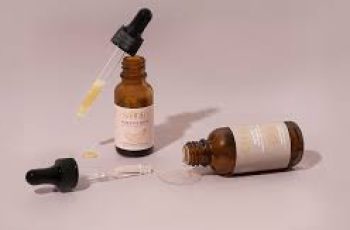
What Is the Most Effective Form of Retinol?
Retinol is one of the most potent skincare ingredients to help combat the signs of ageing and other skin concerns, it has the scientific backing to prove it.
When using retinol you must introduce the product to your skin slowly in order to build its tolerance towards the variety of strengths and making a note of how the skin responds.
You can find out more about introducing retinol into your skincare routine by taking a look at our blog post about the skincare benefits of retinol.
The question you may be wondering is, what is the most effective form of retinol? Are over the counter retinol products worth the time and effort?
Or will your skin benefit best from an indulgent afternoon have a facial with a medical grade product? This is something we have taken a closer look at and are sharing the detailed insights with you.
What is the best percentage of retinol to use?
Retinol comes in multiple strengths, most common being 0.25%, 0.5%, 1% and 2%.
When shopping for an over the counter retinol product ensure you check the label to see which percentage is shown,
if it doesn’t specify this generally means the level of retinol is weaker than 0.25% and will not give you the full benefits.
Your skin type can also have an affect on how retinol will treat and benefit your skin;
Retinol For Oily Skin Types
If you have an oily skin type you can experiment with a higher percentage of retinol, however, it must still be introduced to the skin slowly by applying it once a week with your evening skincare routine.
Once you have found the skin reacts well to the product you can increase the application to 2-3 times a week and so on until you can use it every night.
Considering the consistency of the product can also have an effect on the retinol’s performance, serums are lighter, easily absorbed and less congestive as creams, this makes retinol serums ideal for oily and blemish-prone skin types.
Retinol For Dry Skin Types
Dry skin types may find the skin is thin and easily irritated so using a lower-strength option will allow the skin to build its tolerance without any reaction, such as redness or sensitivity. Introducing the product is the same for every skin type, however a cream-based retinol product would work well for dry skin types by delivering the active ingredients slower with an extra hydration boost.
No matter which skin type you are, consistency is key to see the true results of retinol. Smoother, brighter and younger looking complexion is something you can expect to see after 4 weeks of use. Sometimes the trouble of having to use the slow method of adding retinol into your regime makes people rush the process and they discontinue using it once they find their skin reacts badly, remember, slow and steady wins the race.
What is the strongest form of retinol?
The strength of retinol really depends on where you buy the product from
for over the counter products the highest strength is typically 0.5% or 1% in comparison to medical grade products that can reach as high as 2%, which you can purchase through trained professional or salons.
The beauty of using retinol is that it is an ingredient that will deliver results in any strength you decide to apply.
Lower levels of retinol
Those with dry or sensitive skin will benefit from lower percentages of retinol of 0.25%, this will show marked improvements on the signs of ageing, brightness and uneven skin tone to name a few of its benefits.
By teaming a lower strength retinol with other ingredients, such as antioxidants, you will protect the skin from any daily aggressors, such as pollution, UV damage and other environmental skin concerns.
Medium levels of retinol
Medium percentage levels of retinol are perfect for anyone who has noticed their skin ageing has affected the firmness and elasticity.
You may also find that if you suffer with uneven skin tone and texture then 0.5% retinol will benefit the complexion when applying the product 2-3 nights a week.
Higher levels of retinol
As for deep wrinkles, severe uneven tone and texture is concerned, you will benefit from 1% retinol.
You will find this percentage will provide the quickest results in combating those tougher skin concerns, remembering of course to perform a patch test on the skin to prevent any irritation and to add the ingredient into your routine gradually.
Which is best retinol or hyaluronic acid?
Can we be so brash to say we adore them both? Believe it or not retinol and hyaluronic acid make an incredible skin restoring power duo.
Both ingredients work in different areas of the skin whilst benefiting a variety of concerns.
For example, retinol is able to increase the blood flow, kick starting the collagen production in the lower layers of the skin.
It is here retinol allows the basal cells of the skin to split resulting in new epidermal skin cells to make their way to the surface of the skin resulting in an overall healthy glow and improved skin texture.
As for hyaluronic acid, this mainly targets the skin’s protective skin barrier pulling up hydration from the lower layers of the epidermis and absorbing water surrounding the skin,
locking it all in and leaving you with a plumped and youthful face, with fine lines caused by dehydration visibly reduced.
Using these ingredients together you will be astonished by the results.
Is retinol and Vitamin A the same?
This can easily become a little confusing so we will try our best not to ramble, vitamin A is found in the body and is essential for supporting skin, eye and reproductive health, it also helps with immune function.
There are two types of vitamin A, first of which being retinoids, and carotenoids, both types are converted into retinol by the liver.
Our skin is a retinoid-responsive organ and has the ability to absorb vitamin A when it is applied topically, which then stimulates the production of new skin cells and stops the skin from becoming overly dry and uncomfortable.
So, you will find that vitamin A and retinol are near enough the same thing, with one naturally occurring in the body or being introduced by your diet and the other being converted into a topical
ingredient that can be replicated synthetically and blended into a variety of skincare products.
What can you not mix with retinol?
Here are the main ingredients that shouldn’t be mixed with retinol, or used at varying times throughout the day;
Vitamin C and retinol should be used opposite ends of the day
As we mentioned early lower strength retinol teamed with antioxidants are great at keeping the skin healthy and happy. We would suggest using both ingredients at opposite ends of the day.
Vitamin C in the morning to give your skin a protective layer of free radical fighting product, and retinol in the evenings to help repair any damage and rebuild the skin.
Benzoyl peroxide cancels retinol and vice versa
Benzoyl peroxide and retinol literally cancel each other out rendering them both useless and unable to benefit the skin in any way. It is a case of opting for one or the other to add into your routine.
AHA and BHA should not be used alongside retinol
Both AHAs and BHAs are mainly chemical exfoliants and if used with retinol can cause the skin to become dry, tight and damaged due to the fact that retinol also exfoliates the skin .
Much like vitamin C we would recommend using AHAs or BHAs when you are not planning on using retinol, not forgetting to apply your sunscreen during the day of course.
How can you get retinol naturally?
Vitamin A naturally occurs in the body and can be added by the diet you have, for example, eating oily fish, like salmon and red meat, such as liver and carrots is an easy way of introducing retinol to your diet.
There is of course another natural alternative to retinol for you to use and that is Bakuchiol, a potent antioxidant with a multiple of benefits for the skin,
you can find out everything about Bakuchiol by checking out the blog about skincare benefits of Bakuchiol.
We hope that this has answered your questions about the most effective form of retinol, don’t forget to check out our Instagram for daily tips, discount codes and first looks for new product launches!
Don’t miss out on more skincare tips and expert advice over on our YouTube channel! Come and find us on The Green Sofa by hitting the subscribe button, you won’t regret it!


